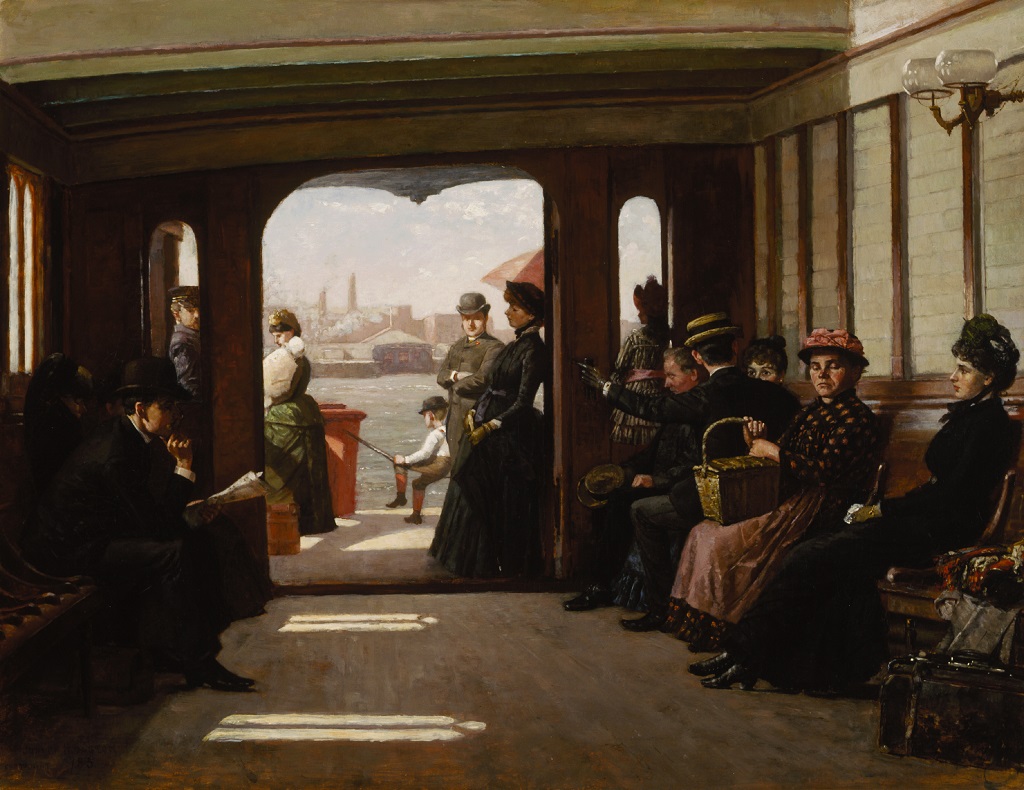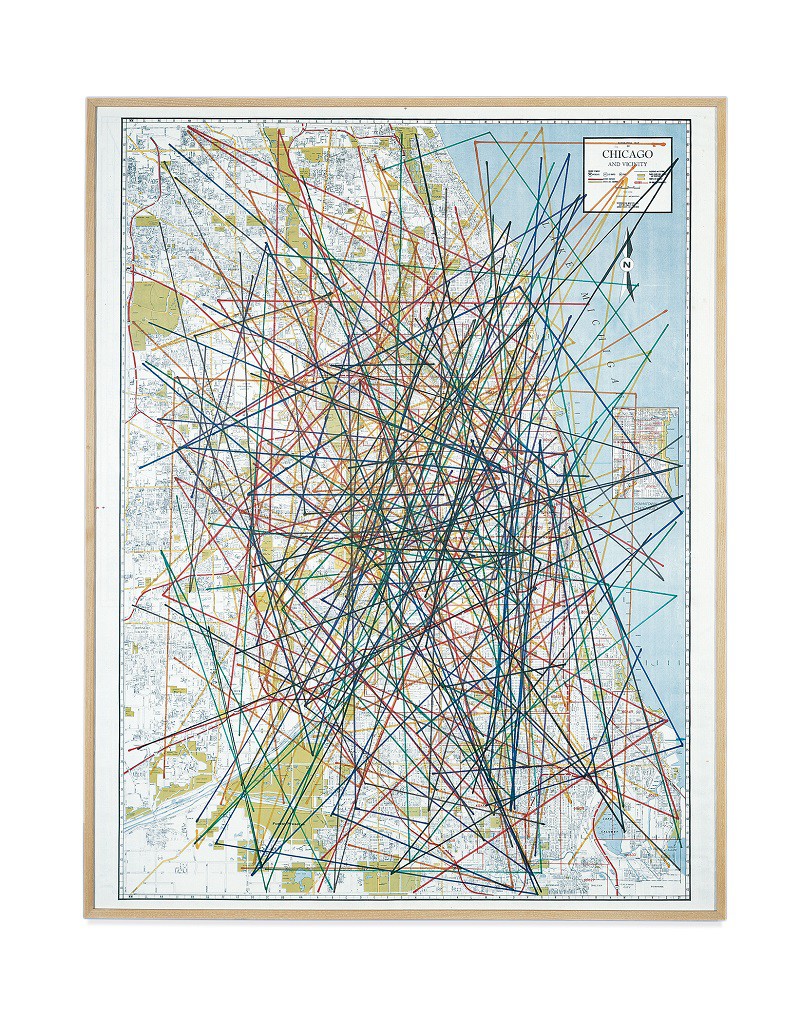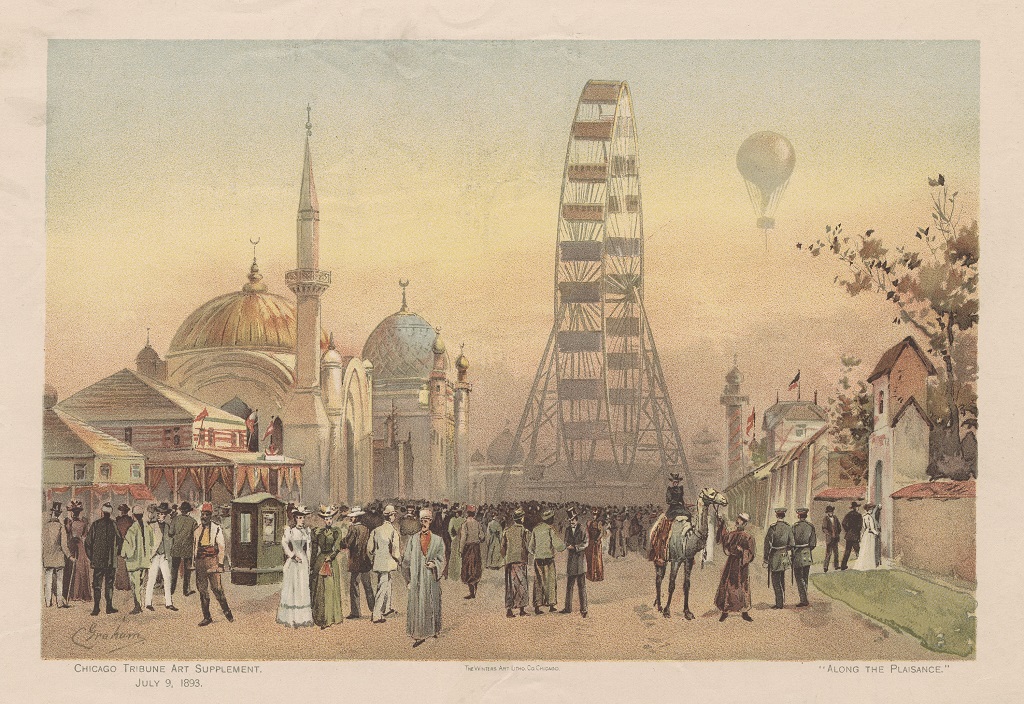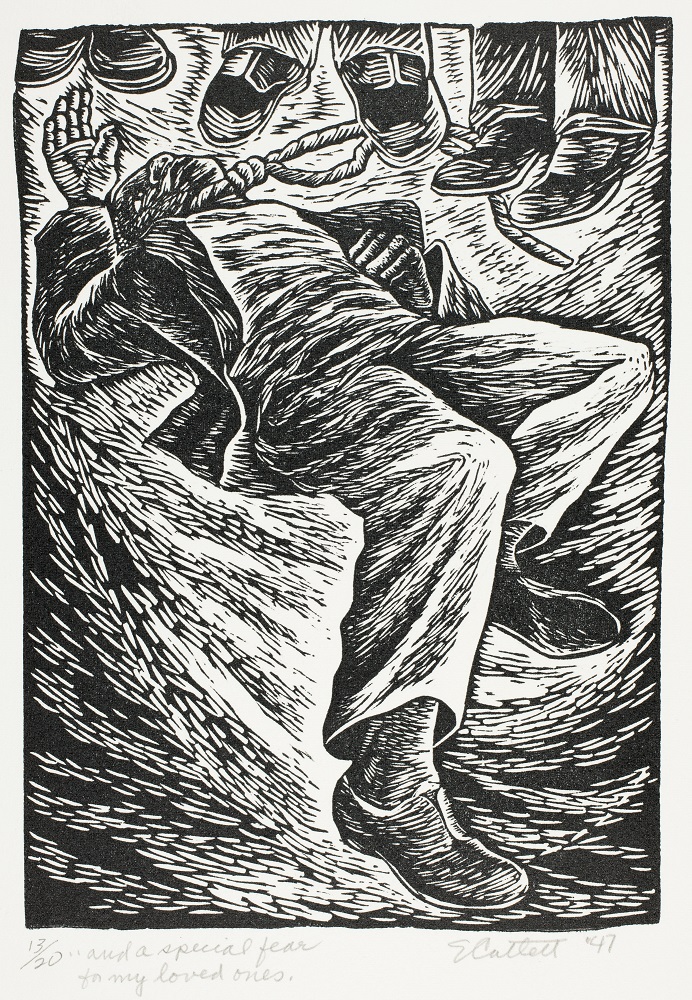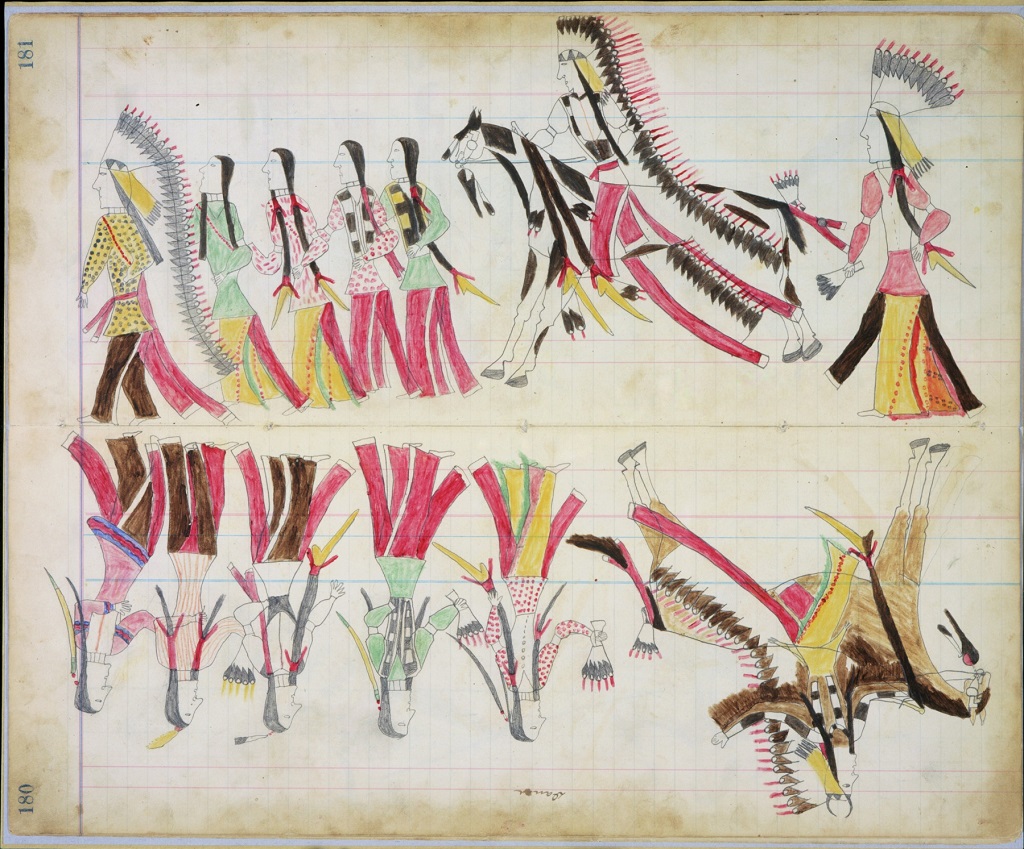Authors:
Sara Jatcko, Terra Foundation for American Art
Manuel Valderrama, Lane Tech College Prep High School
Summary:
By conducting close readings of works of visual art and poetry, students will explore how artists connect physical journeys with inner journeys of human experience. Students will also write narratives that depict real and imagined journeys.
Lesson Overview
Grade Levels: 9–12
Time Needed: 4–5 class periods, 40–50 minutes each
Background Needed
No specific background is needed for this lesson.
Essential Questions
- What is a journey?
- How can a work of art or literature take you on a journey?
- How can a physical journey inspire a journey of the imagination?
Enduring Understandings
- Artists and writers can create works that explore inner journeys of human experience as well as external, physical journeys.
- A close reading of a work of art or literature can lead us on an inner journey.
Objectives
- Students will determine central ideas or themes of a text and analyze their development.
- Students will integrate and evaluate content presented in diverse media and formats, including visually as well as in words.
- Students will write narratives to develop real or imagined experiences and events using effective technique, well-chosen details and well-structured event sequences.
- Students will prepare for and participate effectively in a range of conversations and collaborations with diverse partners, building on others’ ideas and expressing their own clearly and persuasively.
Key Vocabulary
- inner journey
- perspective
- theme
- tone
Standards Connections
Common Core State Standards
Anchor Standards in Reading:
http://www.corestandards.org/ELA-Literacy/CCRA/R/
- CCSS-ELA Reading Anchor Standard 2: CCSS.ELA-LITERACY.CCRA.R.2
- CCSS-ELA Reading Anchor Standard 7: ELA-LITERACY.CCRA.R.7
Anchor Standards in Writing:
http://www.corestandards.org/ELA-Literacy/CCRA/W/
- CCSS-ELA Writing Anchor Standard 3: CCSS.ELA-LITERACY.CCRA.W.3
Anchor Standards in Speaking and Listening:
http://www.corestandards.org/ELA-Literacy/CCRA/SL/
- CCSS-ELA Speaking and Listening Anchor Standard 1: CCSS.ELA-LITERACY.CCRA.SL.1
Materials
In the Classroom
- a computer with Internet access
- an interactive whiteboard or another classroom projector
Works of Art
- Joseph H. Boston, From Shore to Shore
Other Resources
- Art Study: From Shore to Shore, Read to Build Understanding
- Walt Whitman, “Crossing Brooklyn Ferry”
- Close Reading Guide: “Crossing Brooklyn Ferry”
Lesson Steps
- Have students document an everyday journey: Ask students to jot down or draw* what they see, hear, or experience while traveling to or from school. Ask students if the journey’s endpoint affects the details they remember. Why were they drawn to these specific details of their journey? What might others traveling with them have noticed? Consider discussing how an individual’s perspective, life context, and destination affect what he/she notices.
*Note: While using cell phones to film the experience could be useful, it could be seen as intrusive by othergs and may not be safe.
- Guide a close reading of a work of art: Project Joseph Boston’s painting From Shore to Shore and ask students to record the details they notice about the painting. Use the questions and prompts below as a starting point, but encourage students to address details from the painting that interest them or provoke questions.
- Spend a few minutes looking closely at this work of art. Write down five things you notice. What did you notice and why?
- Describe the people portrayed in this painting. What do their clothing and belongings tell you about who they might be and when this painting might have been made?
- What do the different people appear to be doing?
- Which people do you notice the most? What makes you notice them?
- Notice the way the artist uses color and value contrasts to separate different spaces within this scene. Describe these different spaces.
- What kind of place is shown here? Provide evidence for your response.
- Based on the artist’s use of light and shadow, at what time of day do you think this scene is taking place?
- What’s your (the viewer’s) vantage point on this scene? How does the arrangement of the composition invite or allow you to enter the scene?
- What do you think is the subject or main idea of this painting?
- What attitude about the subject matter do you think the artist is conveying? Which details make you think this?
- Have students read an informational text about the painting: Distribute copies of the Art Study: From Shore to Shore, Read to Build Understanding. Have students work with partners to read the text and annotate or highlight the passages that give them new insights about the painting and its meaning. Then lead a whole-class discussion with questions like the following:
- How do your initial observations about Boston’s painting compare with the information presented in the text?
- Does the informational text change the way you experience and/or make sense of the painting?
- As you look at the painting now, do you see details that suggest a deeper meaning, beyond an everyday journey?
- Does it affect your confidence in your initial observations?
- Have students write a narrative based on the painting: Tell students to choose one of the people depicted in From Shore to Shore. Students should write either a diary entry or a letter from the perspective of the person they chose that explains where the person is going and why he or she is making this journey. Encourage them to incorporate details from the painting and the informational text to make the narrative more vivid and realistic.
- Guide a close reading of the poem that inspired Boston’s painting: Remind the class that the painting From Shore to Shore by Joseph Boston was inspired by Walt Whitman’s poem, “Crossing Brooklyn Ferry.” Project or distribute copies of the poem. Because of its length, you may wish to focus on the first three stanzas or identify another excerpt from the poem to examine closely.
Before reading the poem with students, explain that Walt Whitman was born in Long Island, NY, in 1819 and grew up in Brooklyn. At the time he wrote this poem, there were no bridges connecting Brooklyn and Manhattan, so people had to cross by ferry or another type of boat. Whitman is frequently referred to as “America’s poet,” as he often celebrated the sights and sounds of America and its founding principles within his poetry. (For a timeline of Whitman’s life, see the following: http://www.pbs.org/wgbh/amex/whitman/timeline/.)
Read aloud the selected excerpt from the poem to the entire class. As they listen, students should consider the following questions:
- Who is narrating the poem?
- What experience does the narrator seem to be sharing?
Divide the class into small groups and distribute copies of the Close Reading Guide: “Crossing Brooklyn Ferry” to each student. Tell students to have one person in the group read the poem excerpt aloud a second time. The other students should note unfamiliar vocabulary words in the box on the Close Reading Guide. Students should work together to determine the meanings of these words, consulting dictionaries and online resources as needed.
Have the groups read the poem again, either aloud or silently. After this reading, students should discuss the questions on the Close Reading Guide with their group members. Each member of the group should record responses to these questions.
- What is the setting of this poem? How do you know?
- Who is speaking? What, if anything, can you infer about the speaker, such as age, gender, social class, etc.?
- Who is the speaker speaking to?
- How is this poem organized?
- Walt Whitman frequently included lists in his poems. What lists do you find in this poem? What effect do these lists have on the poem?
- How do rhythm and repetition contribute to the poem? In what ways does the rhythm of the poem reflect the subject and setting of the poem?
- Guide a class discussion on the poem: Invite students to share their responses to the previous questions with the class. Then deepen the discussion with questions such as the following:
- In the first stanza, what kinds of crossings could the speaker be referring to?
- What is the speaker’s relationship to the other passengers on the ferry? Which words and phrases reveal this relationship?
- How does the speaker’s perception of this relationship change during the course of the poem?
- In this poem, Whitman reflects on both physical and inner journeys. What physical journeys does Whitman address? What kinds of inner journeys does he address? Cite specific passages that illustrate these two types of journeys.
- “Tone” is the speaker’s attitude toward the subject expressed through word choice. What is the dominant tone of the poem in this excerpt? What words and phrases in the poem support your answer?
- What is the theme of this poem? In other words, what message is the poet conveying through this poem? Provide evidence from the text for your response.
- Have students compare and contrast the poem and the painting: Guide the discussion with questions like the following:
- Do you think that Boston’s painting, From Shore to Shore, and Whitman’s poem, “Crossing Brooklyn Ferry,” present similar or different ideas about the Brooklyn Ferry and the journey of life? Cite evidence from the painting and poem in your answer.
- How do these two works show the same type of journey in different ways?
- How does the painting affect you as a viewer? How does the poem affect you as a reader or a listener? In what way does the medium affect the message each artist is communicating?
- Are there any details of this journey that the painting conveys more vividly than its source poem?
- What does the poem say that the painting cannot show?
- Have students re-chronicle a mundane or everyday journey: Revisit the writing exercise from step. Tell students to chronicle the journey from home to school again, creating a narrative in written or visual form or both. In either medium, students should carefully think about how they will use form, content, craft, and structure to convey the meaning of the journey. To guide students’ work, ask them to consider the following:
- Think back to the text and work of art we’ve examined: Joseph H. Boston’s From Shore to Shore and Walt Whitman’s “Crossing Brooklyn Ferry.” What techniques did each author/artist use? Which techniques resonate with what you want to convey about your own journey?
What parts of the journey will you represent? What details will you include? - What message do you want to convey?
- What techniques can you use to express the mood, tone, and meaning of your journey?
- Discuss students’ narratives: Have students present their narratives to the class. After their presentations, lead a discussion using the following questions:
- Did knowledge of the destination affect what you noticed during or about the journey?
How did the exercise of noticing and recording your journey affect the way you think about your destination once you arrived?
To what extent did your awareness of the task of rendering or describing the journey affect what you noticed during the journey? - Why did you choose to chronicle your journey through art/writing/ a combination of the two?
Extension Activities
Write a Comparison
Have students write an essay to compare how Boston and Whitman establish a connection between physical journeys and inner journeys in their respective works, From Shore to Shore and “Crossing Brooklyn Ferry.” Students should point out the techniques that each uses to express this connection, citing examples.
Additional Resources
Poetry Foundation. “Walt Whitman: Biography.” Accessed December 15, 2014. http://www.poetryfoundation.org/bio/walt-whitman
Public Broadcasting Service. “Walt Whitman: Timeline.” Accessed December 15, 2014. http://www.pbs.org/wgbh/amex/whitman/timeline/
The Walt Whitman Archive. “Life and Letters.” Accessed December 15, 2014. http://www.whitmanarchive.org/biography/index.html

